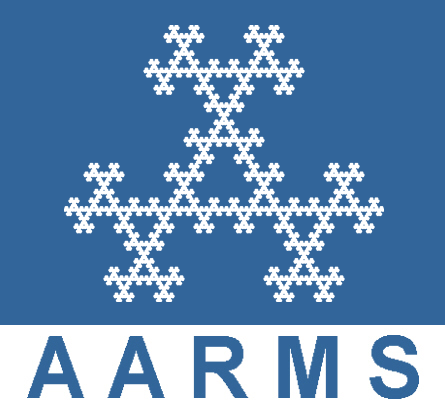Réunion d'hiver SMC 2016
Niagara Falls, 2 - 5 décembre 2016
Propriétés stochastiques des systèmes dynamiques
Org: Jacopo De Simoi (University of Toronto), HongKun Zhang (University of Massachusetts Amherst) et Ke Zhang (University of Toronto)
[PDF]
Org: Jacopo De Simoi (University of Toronto), HongKun Zhang (University of Massachusetts Amherst) et Ke Zhang (University of Toronto)
[PDF]
- FRANCESCO CELLAROSI, Queen's University
The dynamical construction of an automorphic function [PDF]
-
I will present the construction of an automorphic function on the Jacobi group G (the Lie group consisting of the semidirect product of SL(2,R) and the Heisenberg group). This function generalizes Jacobi theta function. The function is invariant under the action of a lattice in G and thus well defined in the quotient, but a priori only as a square-integrable function.
We are able to show that the function is actually defined pointwise along the whole orbit of almost every point, under the geodesic flow. The construction uses dynamical ideals of renormalization, ergodicity of the geodesic flow, equidistribution of horocycle lifts, and a partition of unity suitably "adapted" to the flow. Joint work with Jens Marklof.
- SETH CHART, Towson University
Statistical properties of intermittent generalized baker's transformation via anisotropic Banach spaces and renewal methods [PDF]
-
We construct Banach spaces with anisotropic norms adapted to the dynamics of a class of generalized baker's transformations, which are piecewise non-uniformly hyperbolic maps on the unit square (see Bose Murray 2013, Bose 1989, Alexander Yorke 1984, Tsujii 2001, Rams 2003). We apply operator renewal theory (see Sarig 2002, Gouezel 2004) to analyse the action of the transfer operators associated to these maps and deduce their statistical properties.
- JIANYU CHEN, University of Massachusetts Amherst
Statistical properties of one-dimensional expanding maps with poor singularities [PDF]
-
We consider one-dimensional non-Markov uniformly expanding maps, whose derivatives may have unbounded variations. Under certain conditions, we are able to show the existence of absolutely continuous invariant measure, exponential decay or correlations, central limit theorem and large deviation principle. Our method applies to the beta transformation, the Lorenz-like map, the Gauss map, and their $C^1$ perturbations.
- MARK DEMERS, Fairfield University
Escape rates and limiting distributions for intermittent maps with holes [PDF]
-
Dynamical systems with holes model systems in which mass or energy is allowed to escape over time and have attracted much attention over the last ten years. Typically, one starts with a closed system and declares a subset of the phase space to be the 'hole,' essentially an absorbing set. To date, most published works focus on systems in which the rate of mixing, and thus the rate of escape, are exponential. This talk will investigate a class of polynomially mixing systems with holes which exhibit qualitatively different behavior from exponentially mixing systems; this behavior can be characterized as a loss of stability from the point of view of the absolutely continuous invariant measure for the closed system. By varying the potential of the associated transfer operator in this family, we are able to classify three distinct regimes with different limiting behaviors based on a relation between the rate of mixing and the rate of escape. Finally, we attempt to recover some notion of stability via the measures supported on the survivor set of the open system, even when no limiting absolutely continuous conditionally invariant measure exists. This is joint work with Bastien Fernandez, CNRS, and Mike Todd, St. Andrews.
- DMITRY DOLGOPYAT, University of Maryland
Renewal Theorem for Infinite Measure Systems [PDF]
-
We describe sharp conditions for mixing of infinite measure systems based on local limit theorem and simple a priori bounds.
- ALEX GRIGO, University of Oklahoma
A study of a billiard like dynamical system [PDF]
-
Billiard like systems are popular models in statistical mechanics and dynamical systems theory. In this talk I will present one such model, which is a mathematically simplified version of a popular interacting particle system. I will show how an averaging theorem can be established to extract a transport law that in the many particle system context has been studied by many numerical and physical experiments as well as kinetic theory.
- TOBIAS HURTH, University of Toronto Mississauga
Smooth invariant densities for switching systems on the torus [PDF]
-
We consider a random dynamical system governed by two smooth vector fields on the two-dimensional torus, with switches between these vector fields happening according to a Poisson process. If the vector fields are transversal to each other at every point on the torus and if their flows are smoothly conjugated to flows without periodic orbits, the invariant measure of the associated Markov semigroup has a smooth density for any switching rate. This talk is based on work with Yuri Bakhtin, Sean Lawley and Jonathan C. Mattingly.
- FERNANDO KASUN, University of Maryland, College Park
An Error Term in the Central Limit Theorem for Sums of Discrete Random Variables [PDF]
-
We consider sums of independent identically distributed random variables whose distributions have $d+1, \ (d \geq 2)$ atoms. Such distributions never admit an Edgeworth expansion of order $d$ but we show that for almost all parameters the Edgeworth expansion of order $d-1$ is valid and the error of the order $d$ Edgeworth expansion is typically of order $n^{-d/2}$. This is a joint work with Dmitry Dolgopyat.
- ALEXEY KOREPANOV, University of Warwick
Uniform statistical properties of chaotic dynamical systems [PDF]
-
I am going to talk about statistical limit laws
for Birkhoff sums, such as the central limit theorem,
the weak invariance principle, or the almost sure
invariance principle. The motivation is fast-slow systems,
driven by a family of dynamical systems, where one needs
to obtain estimates which are uniform for the family.
I plan to present our recent results with Zemer Kosloff and Ian Melbourne which allow us to treat nonuniformly hyperbolic maps such as Pomeau-Manneville, logistic and Viana maps, and externally forced Sinai billiards.
- YAO LI, University of Massachusetts Amherst
Polynomial convergence rate to nonequilibrium steady-state [PDF]
-
In this talk I will present my recent result about the ergodic properties of nonequilibrium steady-state (NESS) for a stochastic energy exchange model. The energy exchange model can be seen as a stochastic approximation of a certain billiards-like deterministic particle system that models the microscopic heat conduction in a 1D chain. By using a technique called the induced chain method, I proved the existence, uniqueness, polynomial speed of convergence to the NESS, and polynomial speed of mixing for the stochastic energy exchange model. All of these are consistent with the numerical simulation results of the original deterministic billiards-like system.
- TERRY SOO, University of Kansas
A monotone isomorphism theorem [PDF]
-
In the simple case of a Bernoulli shift on two symbols, zero and one, by permuting the symbols, it is obvious that any
two equal entropy shifts are isomorphic. We show that the isomorphism can be realized by a factor that maps a binary
sequence to another that is coordinatewise smaller than or equal to the original sequence.
- GIULIO TIOZZO, University of Toronto
The local Hoelder exponent for the dimension of invariant subsets of the circle [PDF]
-
We consider for each t the set K(t) of points of the circle
whose forward orbit for the doubling map does not intersect the interval (0, t), and
look at the dimension function $\eta(t)$ := H.dim K(t).
We prove that at every bifurcation parameter t, the local H\"older exponent of the dimension
function equals the value of the function $\eta(t)$ itself. A similar statement
holds for general expanding maps of the circle: namely we consider the
topological entropy of the map restricted to the survival set, and obtain bounds on its local H\"older exponent in terms of the value of the function.
Joint work with C. Carminati.
- JONGUK YANG, University of Toronto
Siegel Disks of Dissipative Hénon Maps [PDF]
-
I will give a survey of the renormalization theory of semi-Siegel Hénon maps of two complex variables. I will describe the universality results in this setting, and explain their implications on the topology and geometry of the Siegel boundary. This talk is based on the recent works of Gaidashev, Radu, Yampolsky, and the speaker.





